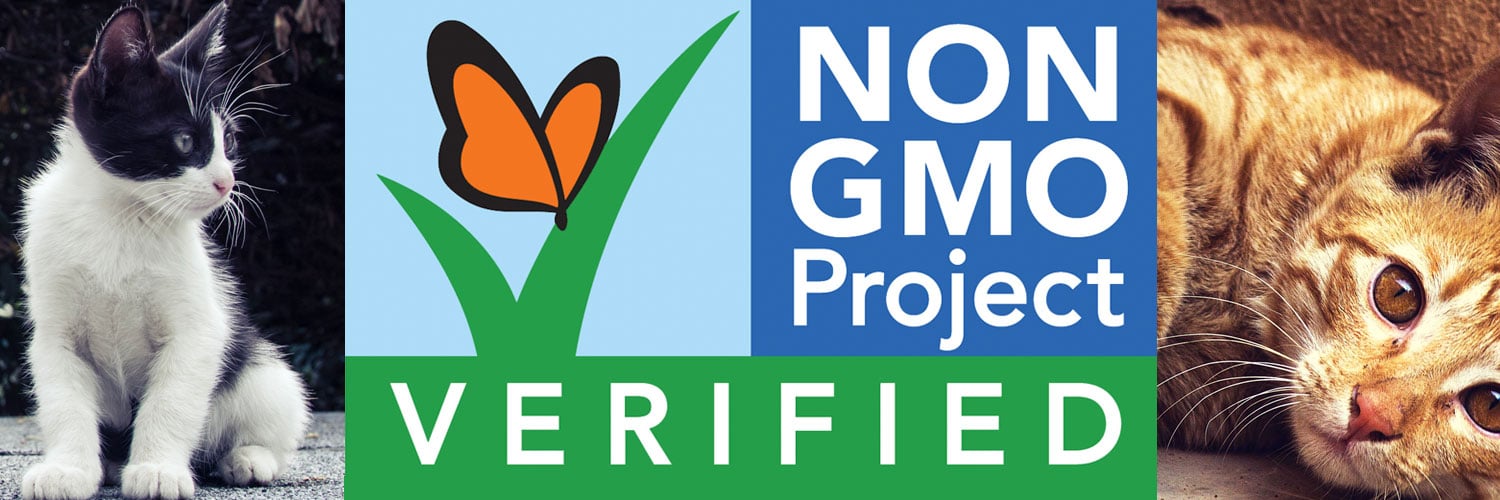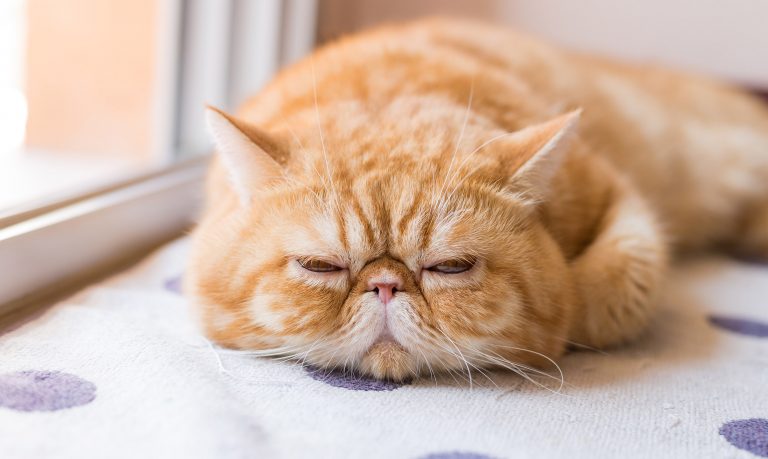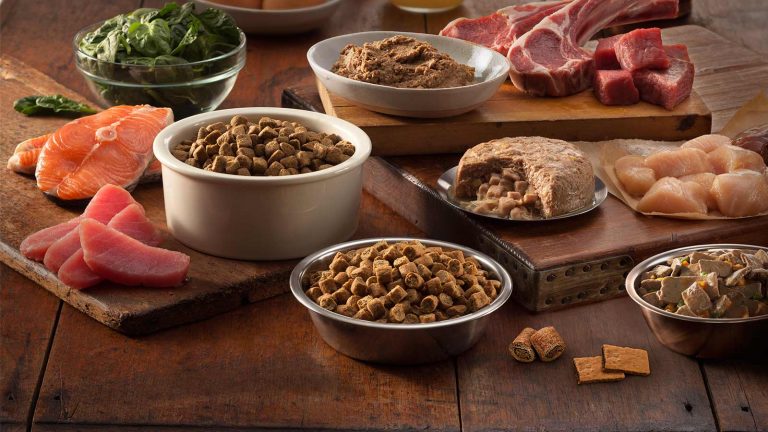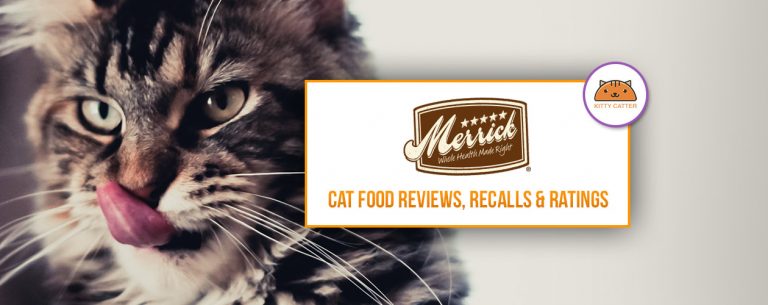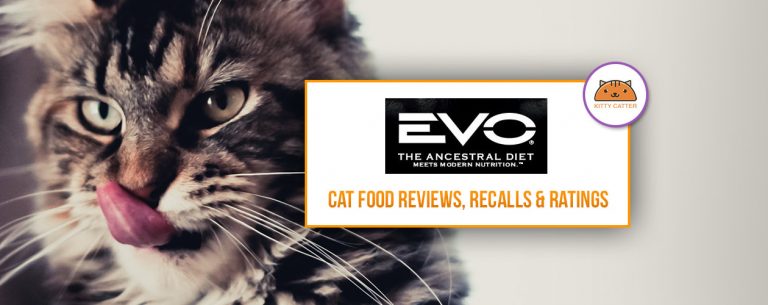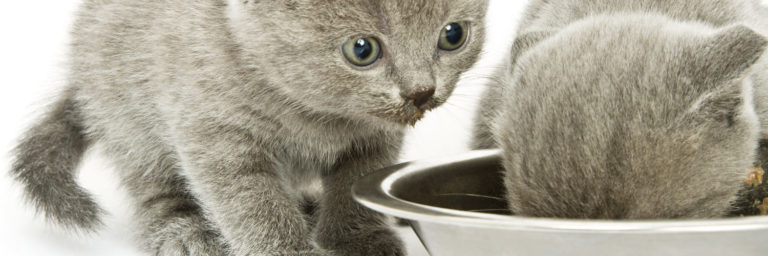Best Non-GMO Cat Food
Contents of Article
When shopping for cat food you may already understand the importance of checking the ingredients list. The ingredients list on pet food products is organized in descending order by volume which means that the ingredients at the top of list are present in the highest quantity (volume). You don’t have to be a pet food expert to understand, then, that it is best to see high-quality, natural ingredients in the first few slots on the pet food ingredients list. What many cat owners fail to realize is that the ingredients list on their pet food package does not always tell the whole story.
Just like human food products, pet food products can contain GMO ingredients and the package will not necessarily make that clear to the consumer. You may already know about the dangers of by-products and artificial ingredients, but GMO ingredients can be hiding in plain sight on the pet food package. In order to ensure that you choose a healthy, high-quality pet food for your cat you need to learn what GMO ingredients are, how to identify them, and how to choose a non-GMO cat food.
What is the Best Non-GMO Cat Food?
What Exactly Does GMO Mean?
The acronym GMO stands for “Genetically Modified Organism”. While this term may bring to mind pictures of wild science experiments or alien life forms, it simply refers to organisms and crops that have been altered at the DNA level to boost specific qualities. For example, genetically modified organisms can be altered to make them more resistant to pests or to help them thrive in certain environmental conditions (such as particularly dry areas). Genetic modifications can even help to increase the nutritional value of the food.
While the anti-GMO craze has reached its peak in recent years, GMO crops have been commercially sold since the 1990s. Genetic modification has been focused primarily on cash crops like soy, corn, and wheat but more and more GMO ingredients have started to work their way onto pet store and grocery store shelves. With the increasing use of GMO ingredients in human and pet foods, there has been a great deal of debate regarding the health and safety of these products in recent years.
There is a very large anti-GMO faction in the United States, though the FDA has yet to ban or even significantly limit the use of these product. In fact, there is yet to be a conclusive scientific study that proves the danger of GMO ingredients for humans or pets. In fact, the FDA doesn’t even require food manufacturers to identify GMOs on their product labels – some of the foods you eat most often probably contain GMOs and the same could be true for your pet.
What GMO Ingredients Do I Need to Watch For?
There have been many studies regarding the health effects of consuming GMO ingredients. Unfortunately, the results of these studies can easily be manipulated to suggest a correlation that is not necessarily there. If you do some research of your own, you will find that many of the studies that delve into the effects of GMO ingredients show that these ingredients are completely safe for human consumption. In fact, many of the studies that do suggest a negative correlation between GMOs and human health are flawed or they are not true scientific studies.
While there is no conclusive evidence regarding any negative long-term effects of GMO ingredients (for pets or people), it is worth noting that many GMO ingredients are ingredients that are bad for pets anyway. According to the Natural Society, the top 10 GMO foods are:
- Corn
- Soy
- Sugar
- Aspartame
- Papaya
- Canola
- Cotton
- Dairy
- Zucchini
- Yellow Squash
If you take a look at this list you will notice several foods that are on the “No” list for cat food – this includes corn, soy, sugar, aspartame, canola, and dairy. Cotton is not a food product, so it can be excluded – this means that the only healthy GMO ingredients your cat might end up eating include papaya, zucchini, and yellow squash. The Global Healing Center has a longer, more in-depth list of GMO ingredients which also include things like high fructose corn syrup, corn starch, beef, and vegetable oil.
While the ingredients listed above are often genetically modified, you still need to remember that there is no conclusive evidence pointing toward negative long-term effects correlated to GMO consumption. It is important to remember that genetic modification can be accomplished in a variety of ways. There are some chemical methods for modifying an organism’s genetics, but selective breeding is a form of genetic modification anyway. By choosing to breed organisms with certain genetic traits you can essentially design an organism with whatever qualities you want. For example, by breeding cows that have higher rates of milk production together you can create a breed of cow that produces more milk than other bovine breeds.
When it comes to determining whether GMO ingredients are bad or go, they must be evaluated on a case by case basis – there is no definitive Yes or No to the question “Are GMO ingredients dangerous”. Many studies have revealed that the risks associated with genetically modified foods are no greater than the risks associated with foods created through selective breeding. In fact, most animal studies show that GMOs are safe for consumption and there is no conclusive evidence to show that GMOs cause harm to humans. Still, it is your prerogative to choose non-GMO cat food for your pet, if you so desire.
How Can I Find Non-GMO Cat Food?
As it has already been mentioned, pet food manufacturers are not required to identify any GMO ingredients that they use in their products. If you want to know whether a product uses GMOs, you will need to be familiar with the foods that are most frequently subject to genetic modifications and you may need to do some research about the individual brand to find out where they get their ingredients. Just because a pet food is labeled “natural” does not necessarily mean that it is not a GMO cat food – many GMO ingredients are considered natural because they have not been processed.
If you want to find a non-GMO cat food for your cat, you should probably stick to organic pet foods. Some pet food manufacturers will label their products non-GMO, but most do not make this distinction. The only guaranteed way to find a non-GMO product without having to do a lot of background research is to choose a product made with organic ingredients. Look for a product that has the “Certified USDA Organic” label on it. Do not assume that a product labeled as “holistic” is organic, either – the use of this term is not closely regulated so it may be nothing more than a marketing gimmick.
Tips for Choosing a High-Quality Cat Food
In addition to looking for an organic cat food, you also need to know how to read the ingredients list on the package to determine the quality of the product. The first thing you need to look for on a pet food label is the AAFCO statement of nutritional adequacy. The American Association of Feed Control Officials (AAFCO) is responsible for regulating the manufacture and sale of pet food products and animal feed. Pet foods are not as closely regulated by AAFCO as human foods are by the FDA, but there are certain restrictions and regulations in place. For example, in order for a pet food to be labeled as “complete and balanced” it must meet the requirements of certain nutrient profiles established by AAFCO.
The nutrient profiles established by AAFCO are based on the minimum nutritional requirements of pets in certain life stages. If a pet food product meets these minimum requirements, the package will carry a statement such as the following: “[Product Name] is formulated to meet the nutritional levels established by the AAFCO Cat Food Nutrient Profiles”. If the cat food you are looking at carries this statement you will know that it is designed for use as a staple diet. What you need to realize, however, is that the AAFCO statement of nutritional adequacy is not necessarily an indication of quality – you can meet the minimum nutritional requirements for cats by using low-quality ingredients. This is why you need to review two other important parts of the pet food label – the Guaranteed Analysis and the Ingredients List.
The Guaranteed Analysis for a cat food product simply shows the minimum values for crude protein, crude fat, crude fiber and moisture as percentages. This is a valuable analysis to have if you are trying to compare two different cat food products. Ideally, the protein content should be very high and the fat content should be moderate. The lower the fiber content the better, since that is correlated to the amount of carbohydrate in the product. It is important to remember, however, that the guaranteed analysis provides a total percentage of protein, fat, and fiber – it doesn’t tell you where these nutrients come from. Protein can come from both animal and plant sources, for example, so you still need to check the ingredients list to determine the quality of the product.
As you have already learned, the ingredients list for pet food products is organized in descending order by volume. The ingredients at the top of the list are present in the highest volume while those at the bottom of the list may only be included in trace amounts. This being the case, you want to see high-quality sources of animal protein, healthy fats, and digestible carbohydrates near the beginning of the list. The first ingredient should always be a source of animal protein – something like fresh meat, poultry, or fish. Meat meals are also a valuable inclusion in pet foods because they have been cooked down prior to their inclusion which means that their volume will not change much when the whole product is cooked – fresh meats contain up to 80% moisture so their volume will decrease significantly during cooking.
In addition to checking for high-quality proteins at the top of the ingredients list you should also pay attention to the carbohydrates used in the product. Cats have a very limited ability to digest plant matter so any carbohydrates included need to be easily digestible for cats – this includes things like brown rice, whole grain oats, sweet potatoes, peas, and tapioca. You will notice that things like corn, wheat and soy are not included – not only are these frequently GMO ingredients but they are low in nutritional value for cats and difficult to digest. Healthy fats like chicken fat, salmon oil, or other fish oils are a valuable addition to high-quality cat foods, as are chelated minerals and dried fermentation products (included as probiotics). Avoid cat food products made with by-products, artificial ingredients, and low-quality fillers.
Top Recommended Non-GMO Cat Foods
If you are concerned about feeding your cat GMO cat food, your best bet is to choose an organic cat food product. Raw cat food, dehydrated cat food, and freeze-dried cat foods may also be good options as long as they are made primarily of raw meat and bones. To help you find a quality non-GMO cat food, try one of the top rated brands reviewed below:
| Food | Price | Nutrition | Rating |
 Smalls for Smalls Fresh Chicken Pate Smalls for Smalls Fresh Chicken PateRead Reviews |
$3.33/lb |  |
 |
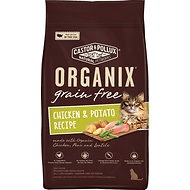 Castor & Pollux Organix Castor & Pollux OrganixRead Reviews |
$3.33/lb |  |
 |
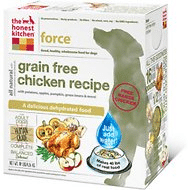 The Honest Kitchen Grain-Free Chicken Dehydrated The Honest Kitchen Grain-Free Chicken DehydratedRead Reviews |
$8.62/lb |  |
 |
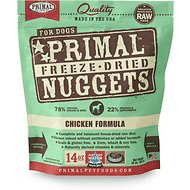 Primal Pet Foods Raw Frozen Primal Pet Foods Raw FrozenRead Reviews |
$2.21/oz |  |
 |
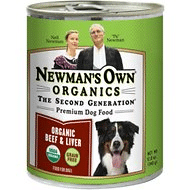 Newman’s Own Organic Canned Newman’s Own Organic CannedRead Reviews |
$2.20/12 oz can |  |
 |
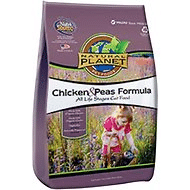 Natural Planet Chicken & Peas Formula Natural Planet Chicken & Peas FormulaRead Reviews |
$3.48/lb |  |
 |
Smalls for Smalls Fresh Chicken Pate

Smalls for Smalls is a human-grade cat food company that delivers fresh food to your doorstep. When you sign up, you will create a profile for your cat, so their food can be just the right recipe for their needs. Smalls for Smalls recipes are great because they have a high protein content, providing your cat with the nutrition he or she needs to live a healthy lifestyle. They also have high water content, which will help keep your cat hydrated.
Because cats are primarily carnivores, most of their nutrition should come from meat, and in Smalls for Smalls recipes, they do just that. Chicken is obviously the most abundant ingredient in this recipe. Human-grade ingredients are fit for human consumption, so there is no guess work involved in figuring out if this food is safe for your cat or not. If you want to provide your cat with a wholesome meal with ingredients you can trust, Smalls for Smalls is a great choice.
Smalls for Smalls believes that you can get back to nature with their human grade, high-protein, high-moisture fresh recipes.
Castor & Pollux Organix

The Castor & Pollux pet food company is one of the few organic pet food brands in existence. According to the brand website, the Organix line of pet food products is the most complete line of USDA-certified organic food for cats and dogs. Not only are Castor & Pollux’s products made with certified-USDA organic ingredients, but they also make use of Non-GMO Verified ingredients as well. The Castor & Pollux Company was founded more than twenty years ago by husband and wife pair Brian Connolly and Shelly Guntun who sought to produce a high-quality pet food product for their dog, Joey. As organic and natural ingredients became increasingly more available, the pair saw an opportunity to take advantage of it with their pet food products. And thus the Castor & Pollux Natural PetWorks company was born.
The Castor & Pollux Company offers two lines of organic cat food products – Organix and Organix Grain-Free. Within the Organix line of products there is one dry food recipe, four wet food recipes, and one organic cat treat. The dry food recipe is Chicken & Brown Rice and it features organic chicken and chicken meal as the top two ingredients with organic peas, organic barley, and organic brown rice for carbohydrates. For wet food recipes, the Organix line includes the following flavors: Turkey & Spinach, Turkey & Salmon, Turkey & Seafood, and Turkey, Brown Rice, & Chicken. The Organix Grain-Free line of cat food products includes three dry food recipes and five wet foods. The three dry foods are Chicken & Potato, Healthy Kitten Recipe, and Healthy Senior Recipe. The four wet food options feature organic chicken, chicken liver, organic turkey, and other quality proteins.
The Honest Kitchen Grain-Free Dehydrated

The Honest Kitchen pet food company is a San Diego-based company that was founded in 2002. The brand began as a homemade raw diet for founder Lucy’s dog Mosi. When she saw the benefits raw food had for her dog, she began to create her own line of premium pet food many with human-grade, dehydrated ingredients. Not only does The Honest Kitchen use human-grade ingredients in their pet food products, but many of their ingredients are certified organic and non-GMO. Their dehydrated ingredients come from quality, reliable sources to ensure safety and nutritional integrity. This company may not offer the widest variety of products, but those they do offer are made with the freshest natural ingredients in formulas that are complete and balanced for cats.
When it comes to cat food products, The Honest Kitchen offers two dehydrated cat food recipes. The Grain-Free Chicken Cat Food recipe is made with 70% free-range chicken along with fresh eggs, sweet potatoes, pumpkin, spinach, and cranberries. The total protein content is a whopping 39% with nearly 30% fat and less than 3% fiber. The Grain-Free Turkey Cat Food recipe features 70% cage-free turkey with the addition of eggs, potatoes, Swiss chard, parsley, and cranberries. Both of these recipes include chelated minerals for maximum nutrient absorption as well as other nutritional supplements. Because the ingredients are dehydrated, not cooked, much of their nutritional integrity is preserved – that is why the recipe is made with so few ingredients. They don’t need additives or a long list of supplements to ensure that the recipe is complete and balanced.
Primal Pet Foods Raw Frozen

The Primal Pet Foods company was only founded in 2001 and they are based in San Francisco, California. This company was established to create human-grade raw foods and treats for pets with the ultimate goal of improving the overall health and quality of life for pets everywhere. Primal Pet Foods follows a whole-food philosophy, designing products that mimic the natural diet of cats and dogs. Their products are made with the highest quality raw ingredients including human-grade, antibiotic- and hormone-free meats, poultry and game as well as certified organic product. Primal Pet Foods sources their meats from local ranchers and they follow the highest standards for safety and quality in producing each and every one of their pet food recipes.
When it comes to non-GMO cat food, Primal Pet Foods offers a wider variety of products but some of their most popular products are their raw frozen cat foods. Primal Pet Foods’ raw frozen formulas are made with 100% human-grade ingredients including meat, poultry, and game that is free from antibiotics, steroids, and hormones. Not only do these recipes include certified organic produce, but they also include unrefined vitamins and certified organic minerals to ensure complete and balanced nutrition. Some of the flavor options available include the Feline Beef & Salmon Formula, Feline Chicken & Salmon Formula, Feline Pheasant Formula, Feline Pork Formula, Feline Rabbit Formula, Feline Turkey Formula, and the Feline Venison Formula. These recipes come in 1-ounce nuggets frozen in zip-sealed bags which makes portioning and feeding easy. The Primal Pet Foods website even offers a feeding calculator to help you determine how much to feed your cat.
Newman’s Own Organic Canned

The Newman’s Own company was started in 1982 as a boutique operation based around Paul Newman’s homemade salad dressings. Over the years the brand grew and developed to the point where they now over more than 200 products spanning 20 different categories, including pet food products. Newman’s Own pet products are made with a unique blend of proteins, whole grains, and healthy vitamins and minerals in recipes that are specially formulated to meet the needs of cats and dogs in all life stages. For dry foods, Newman’s Own offers two premium formulas – Adult Cat Dry Formula and Advanced Cat Dry Formula. Both of these products are made with organic chicken as the primary ingredient with other organic ingredients included such as organic soybean meal, organic peas, organic brown rice, and organic fruits and vegetables.
While Newman’s Own’s dry cat foods are made with an assortment of organic ingredients, many of their canned food products are certified organic on the whole. In addition to four premium wet food products, Newman’s Own also offers seven organic wet cat food products. Three of these recipes are made with organic beef and liver and the other four are made with 95% organic chicken or turkey. The Organic Beef recipe is made with organic beef, organic beef liver, and organic beef broth as the top three ingredients – the remaining ingredients are chelated minerals and various other supplements. Newman’s Own 95% wet cat food recipes are not only certified organic, but grain-free as well. These recipes feature organic poultry, organic broths, and organic dried eggs as well as chelated minerals and other nutritional supplements.
Natural Planet Chicken & Peas Formula

Another great option for organic, non-GMO cat food comes from the brand Natural Planet Pet Foods. This brand began as Pine Lakes Feed in 1947 and it developed into Tuffy’s Dog Food Company in 1964. Since then, the company has worked its way into the super-premium pet food industry. In 2007, the company released their holistic line of cat foods known as Pure Vita and, in 2009, they released their organic line called Natural Planet Organics. According to the brand website, Natural Planet develops their products with a focus on delivering high quality and value while also addressing consumer concerns. This is why they use a selection of organic ingredients that are also non-GMO in their pet food products. They also follow the strictest standards for safety and quality during production.
When it comes to organic cat food products, Natural Planet offers the Chicken & Peas formula All Life Stages Cat Food. This recipe is made with free-range chicken, organic grains, and fresh vegetables to provide cats in all life stages with complete and balanced nutrition. This product contains a minimum of 30% protein, a minimum of 14% fat, and a maximum of 6% moisture. It also contains a balance of omega-3 and omega-6 fatty acids. At the top of the ingredients list for this product you will find organic chicken, chicken meal, organic peas, and organic barley. Other ingredients worth noting include organic oats, organic brown rice, chicken fat, organic dried eggs, and an assortment of organic fruits, vegetables, and seeds. This recipe also includes dried fermentation products as probiotics as well as chelated minerals to ensure maximum nutrient absorption.
Final Thoughts
When shopping for cat food you may easily become overwhelmed by the sheer volume of options available. Commercial cat food products come in a wide variety of forms and it is not always clear by glancing at the package whether the product is high-quality or not. If you are concerned about feeding your cat GMO cat food, take the time to choose an organic cat food product and check the ingredients list and guaranteed analysis to make sure it is a product worth buying. If you need help getting started, try one of the top recommended brands reviewed above.

